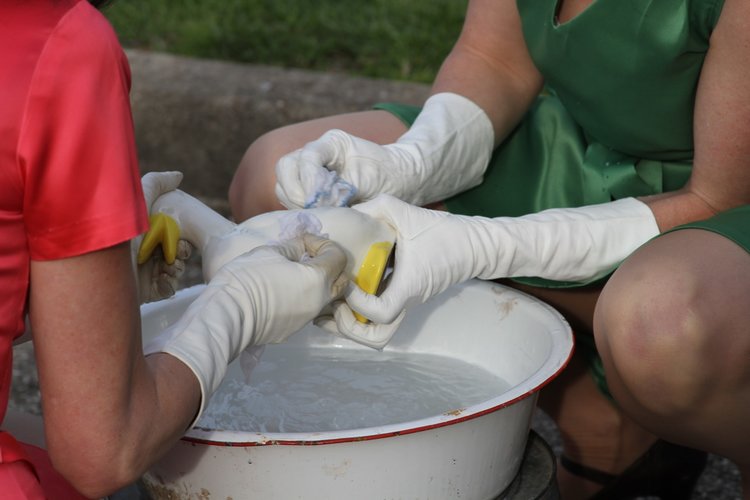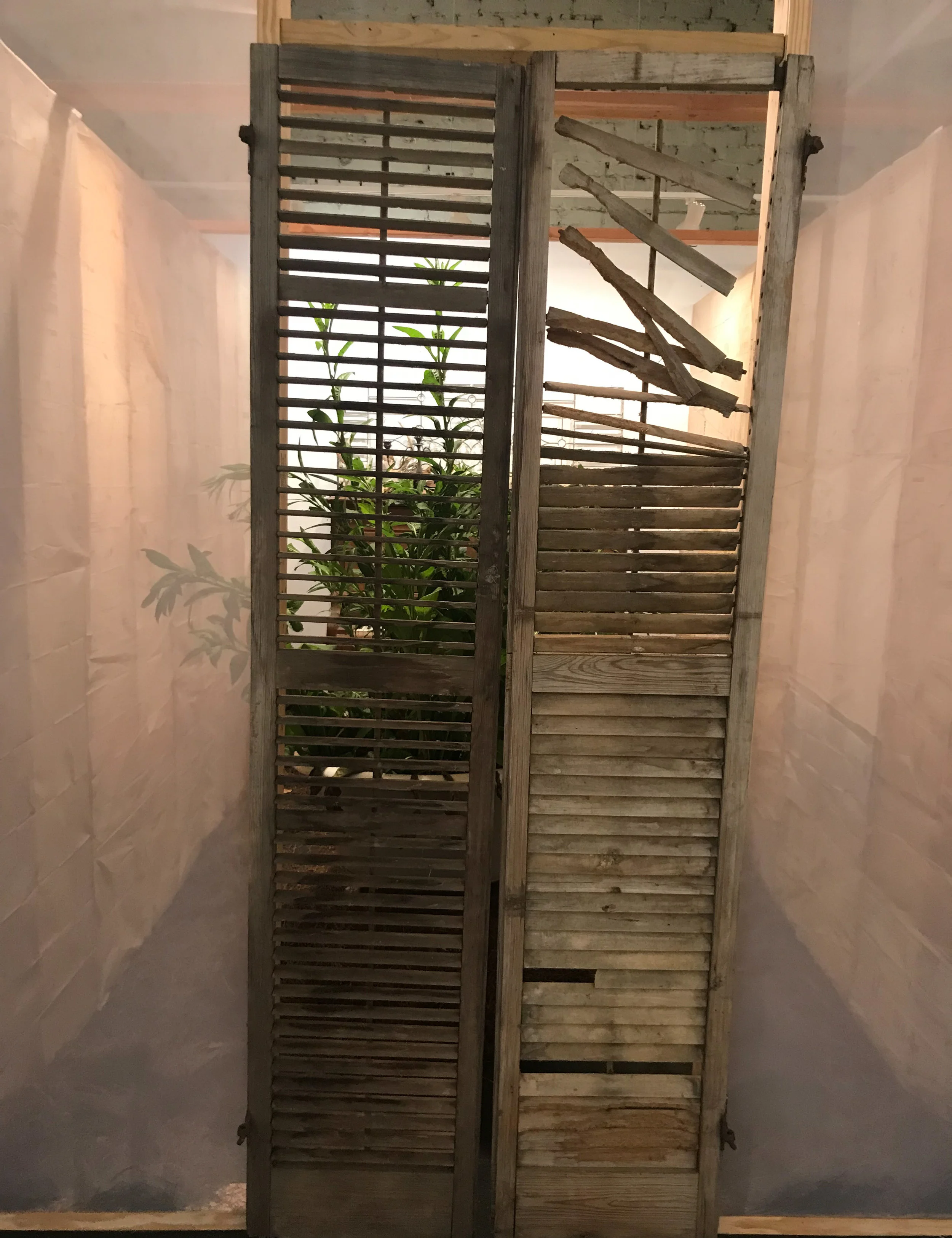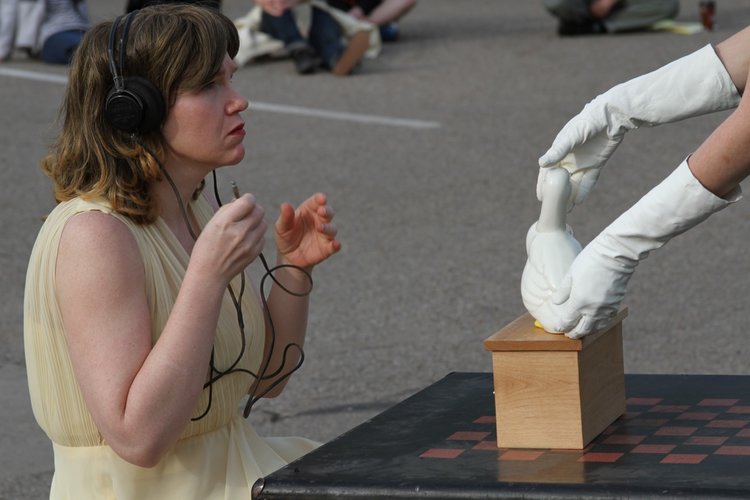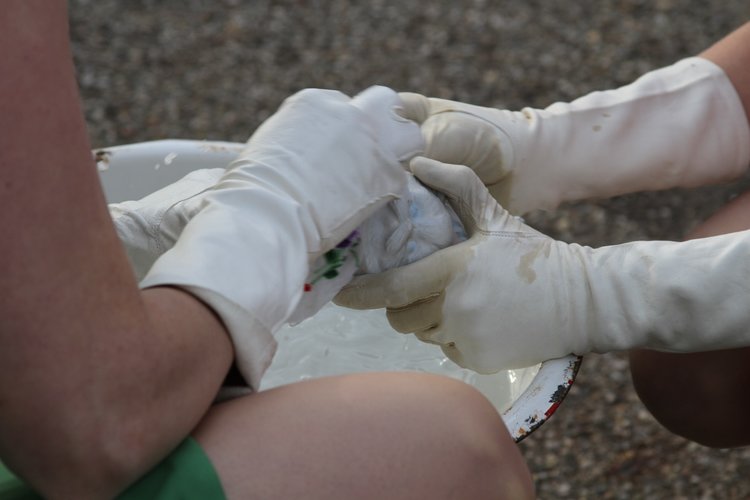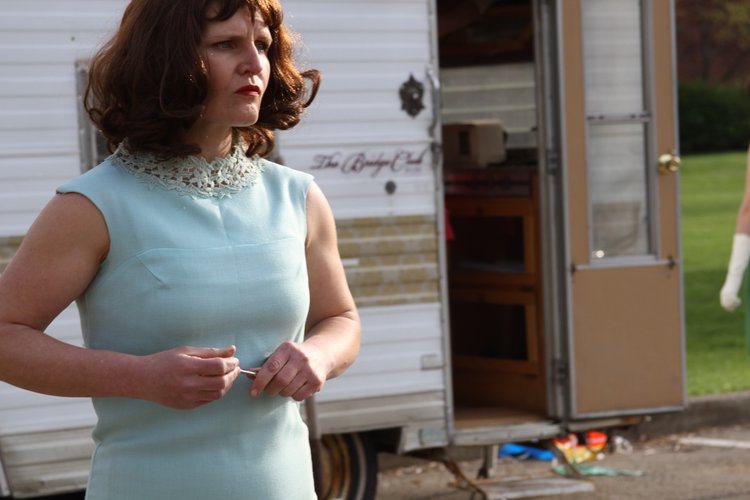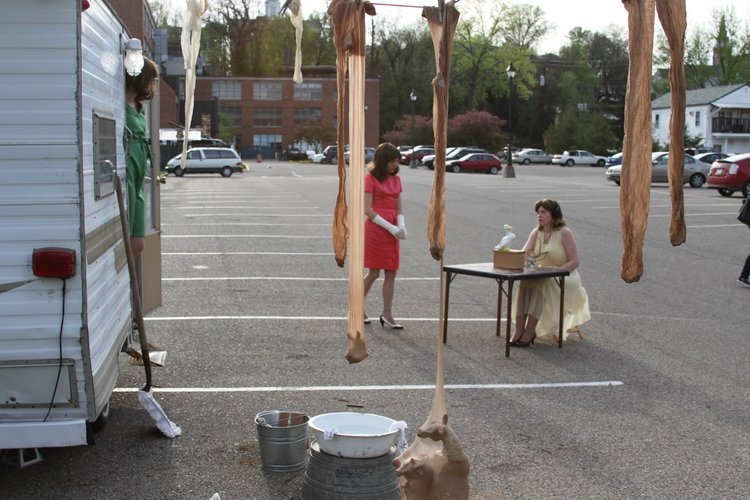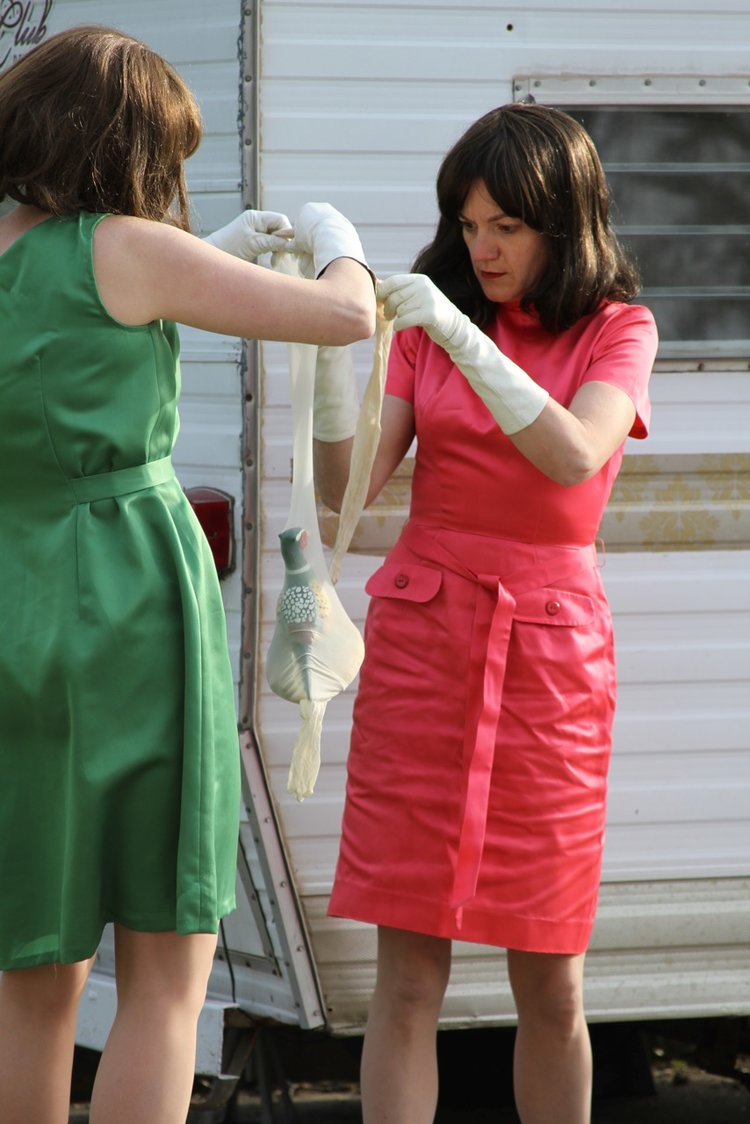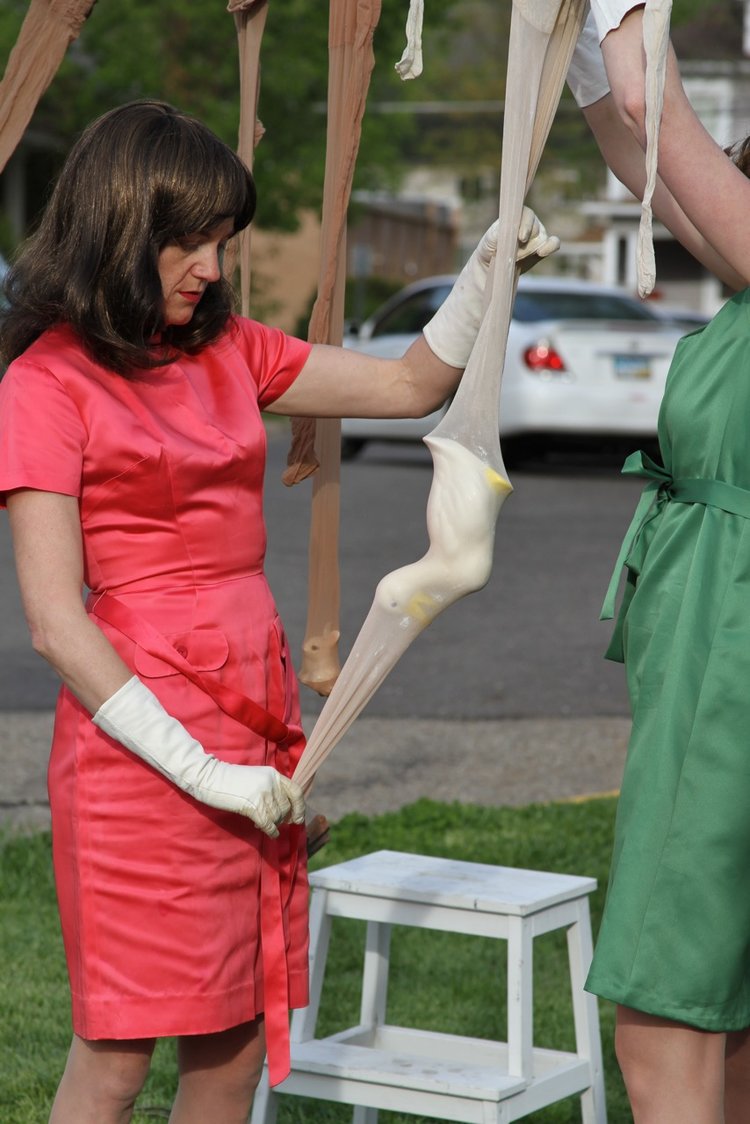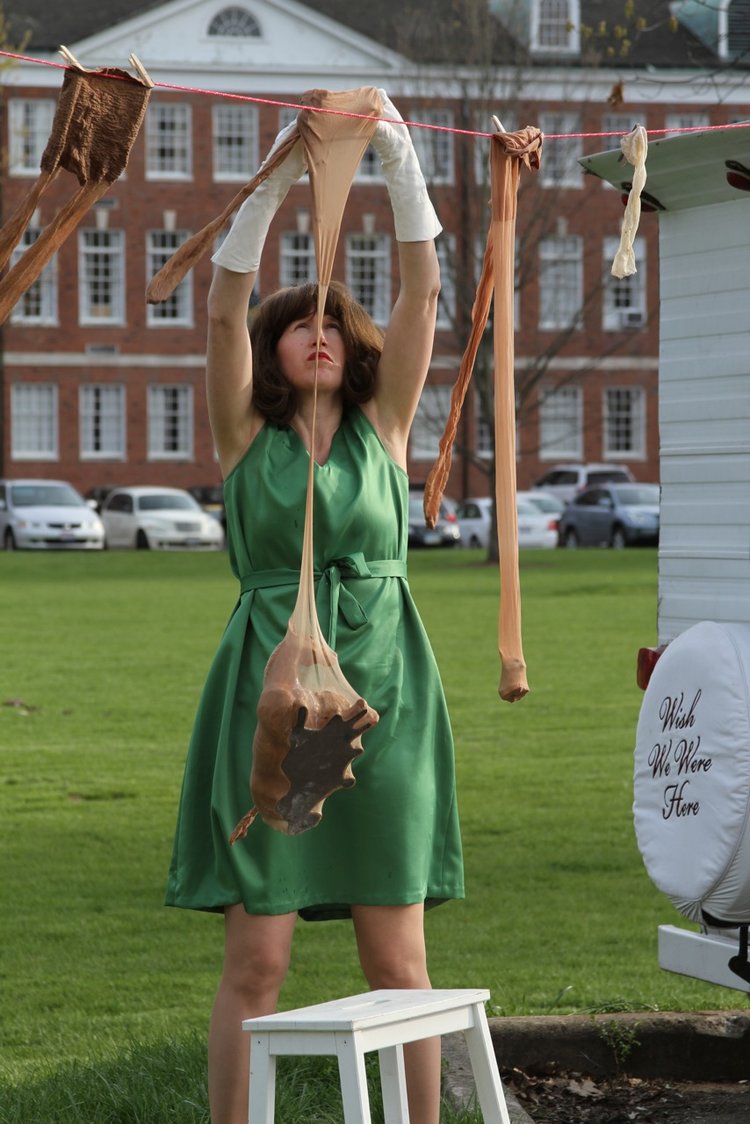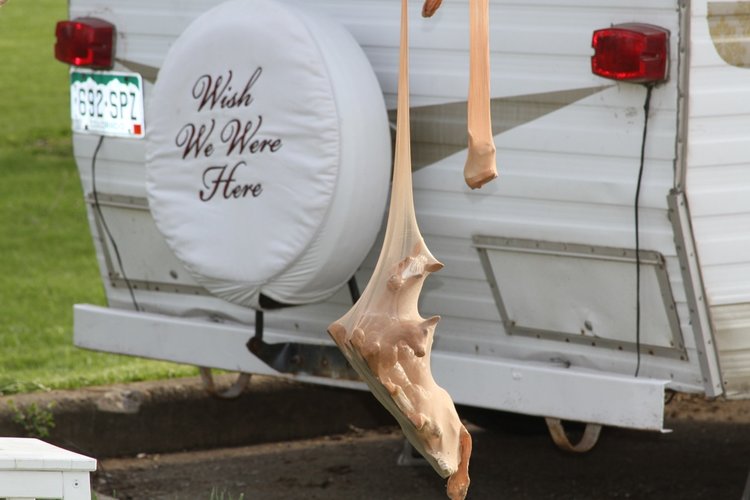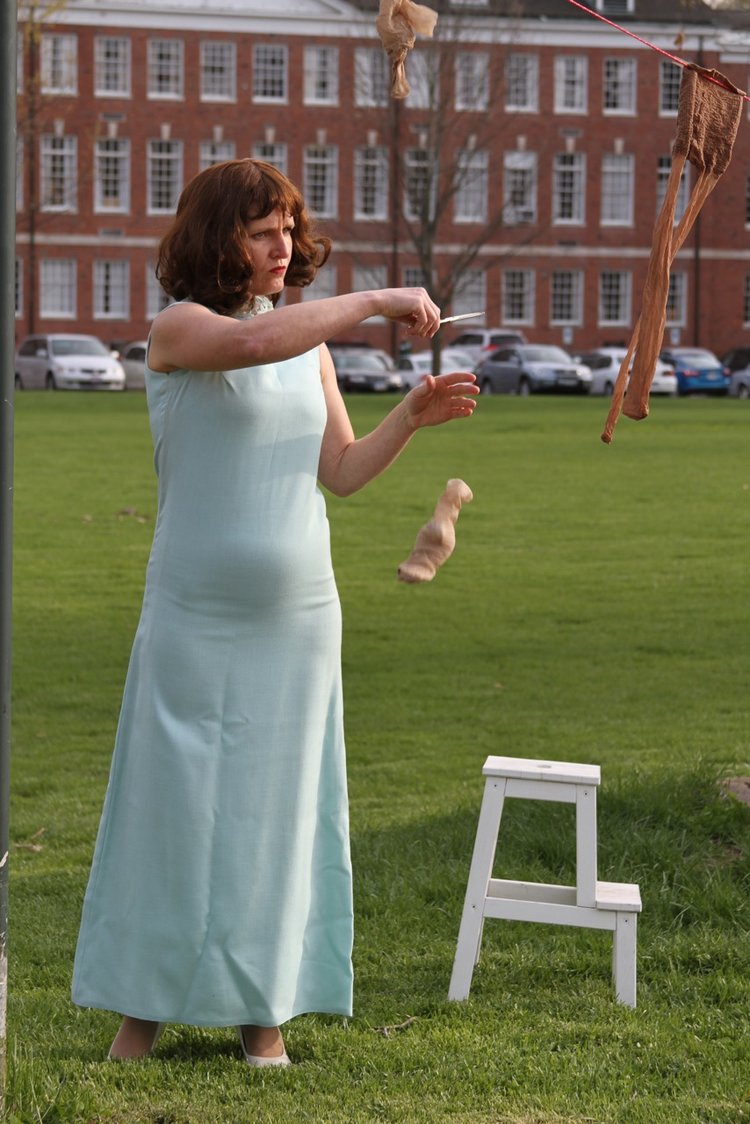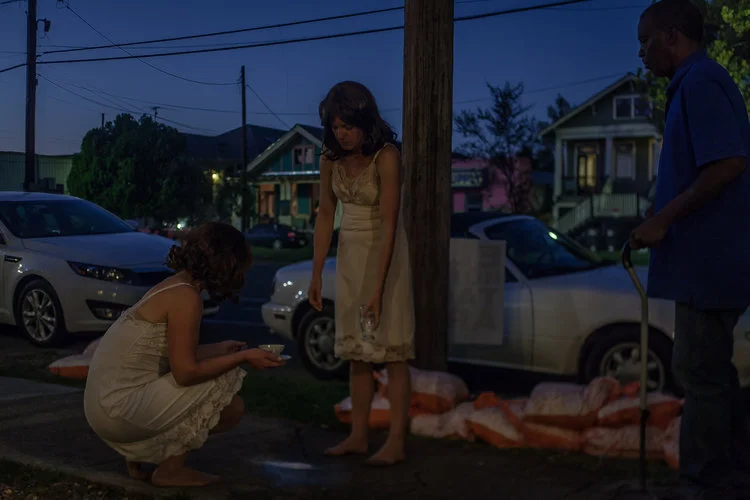WARNING SIGNS
The Bridge Club*
2014, sequence of two performances with The Trailer, presented by Ulrich Museum of Art, and Wichita State University, Wichita, KS
In part I of Warning Signs four women wearing matching black formal dresses engaged in mark making and mark erasing while watching the sky for signs of danger. A woman with white gloves fit with sandpaper tips flips through an atlas erasing places and routes traveled. A woman holding a lace antimacassar covered chalk reel creates the same lines on the concrete while another erases them with spoons of water from a teacup. A woman blows silent air through a megaphone. Another uses a telescope to broadcast images of a storm on the side of the trailer. While both the acts of making and erasing the marks is futile, the work also forecasts the dangers of forgetting what has already been charted.
In part II of Warning Signs four women wearing linen work suits continue to chart and erase with even more urgency while one of the women methodically and endlessly cracks eggs, examines and discards.
‘Warning Signs’ included performances and public interactions supported in part by an Artistic Innovations award from Mid-America Arts Alliance, the National Endowment for the Arts, Texas Commission on the Arts, and foundations, corporations and individuals throughout Arkansas, Kansas, Missouri, Nebraska, Oklahoma and Texas.
*The Bridge Club is a contemporary visual and performance art collaborative, which I co-founded in 2004, consisting of artists Annie Strader, Christine Owen, Emily Bivens and Julie Wills. The Bridge Club’s interdisciplinary installation, video, live performance and digital media works are site- and context- specific, and each work investigates specific local histories, populations, contexts, stereotypes, expectations and conflicts. Performances and installations have taken place in both traditional and nontraditional venues, incorporating and responding to sites such as a hotel room, a city bus, an abandoned storefront, and a laundromat in addition to the traditional gallery or museum space. Each work is conceived in specific relation to its site and audience.
An anonymous collective persona inhabits each of The Bridge Club’s works, with each member artist donning wigs, shoes and a variety of carefully selected garments that relate directly to the site and concept of a specific work. The collective presence of the four costumed member artists lends an unsettling normative air to odd or uncomfortable situations, while costuming and object choices create a historical ambiguity of era that addresses change and continuity of gender and interpersonal histories, roles, expectations and behaviors.























